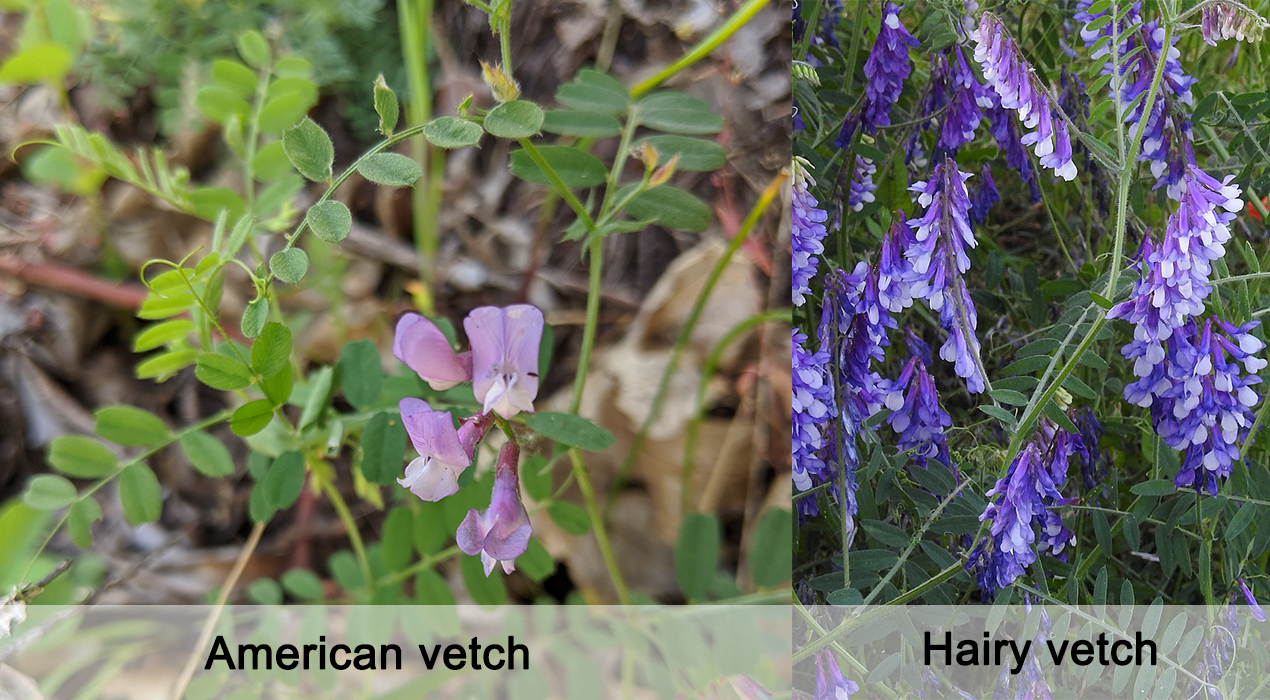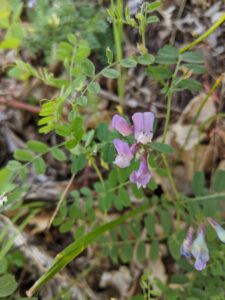For the next few months American vetch (Vicia Americana) will be vining and blooming its way across the understory of woodlands and grasslands in Southern Oregon. This beautiful bloom in the legume family can easily be mistaken for the invasive Hairy vetch (Vicia villosa) that is known for turning agricultural fields and grasslands bright purple in spring and early summer. But with a few key pointers, it becomes relatively easy to tell the difference. The native American vetch has more rounded leaf tip, compared to the narrow pointy-tipped Hairy vetch leaf. American vetch leaves are also less glossy and paler in color, and the flower is generally a much paler purple. Both species are perennial and have deep tap roots that help the plant survive drought conditions, and also fix spectacular amounts of nitrogen in the soil.
American vetch grows in nearly all parts of the US in a wide variety of habitats, and is a very important source of food for browsing mammals, birds and pollinating insects. It is a known larval host for the Western tailed-blue butterfly, the Clouded sulphur butterfly and the Queen Alexandra’s sulphur butterfly. Clearly, this plant is an excellent candidate for pollinator gardens and ecological restoration projects! It could even be used as a cover crop and nitrogen fixing companion plant. Hairy vetch is commonly used in this way, but why not use the native species, and support a diversity of native wildlife at the same time?


